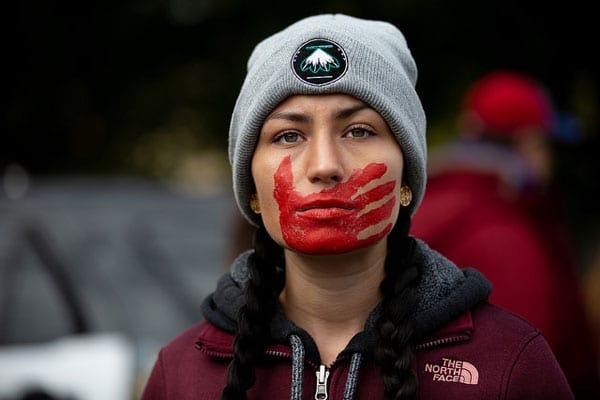Why Indigenous Missing and Cold Cases Are Ignored: A Systemic Injustice
The systemic injustices compound daily for the community
Why Indigenous Missing and Cold Cases Are Ignored: A Systemic Injustice
Want to be a Citizen Detective? Get our PDF on investigating cold cases at home!
✨ The Silent Epidemic: Why Indigenous Cases Are Overlooked✨
Indigenous communities across North America have long faced a crisis: their missing and murdered loved ones often go unnoticed, unreported, and unresolved. 😔 Despite the growing awareness of the problem, systemic barriers continue to prevent justice. Why do these cases remain underreported? What factors contribute to the lack of accountability?
In this article, we’ll explore the deep-seated issues behind the neglect of Indigenous missing persons and cold cases, from racial prejudice to jurisdictional nightmares. We’ll also examine examples where justice could have been served—if only these barriers had been removed.
🛡️ Prejudice and Systemic Racism in Law Enforcement
A painful reality for Indigenous families is the indifference they face when reporting a missing loved one. 😟 Many Indigenous people have shared stories of law enforcement dismissing cases, labeling them as "runaways" or "lifestyle-related disappearances," rather than launching urgent investigations.
✨ Why does this happen? ✨
- Bias in policing: Many officers still operate within a system that historically devalues Indigenous lives. 🔇
- Lack of urgency: The "Missing White Woman Syndrome" means cases involving white women often get national attention, while Indigenous cases remain local news—if they’re reported at all. 📝
- Stereotypes: Harmful assumptions about Indigenous people being involved in crime, addiction, or transient lifestyles prevent authorities from treating cases seriously. 🤯
The result? Days, weeks, even months pass without proper investigations, causing crucial leads to go cold.
🏰 The Jurisdictional Nightmare
One of the biggest obstacles to justice for Indigenous victims is the tangled web of laws governing tribal, state, and federal jurisdictions. 🛠️ If a crime happens on tribal land, multiple agencies may be responsible—but often, no one wants to take the lead.
✨ How does this delay justice?✨
- Tribal police have limited power: Tribal courts can only prosecute certain crimes, and many cases involving non-Indigenous perpetrators require federal intervention. 🌐
- State vs. federal confusion: If a case involves multiple jurisdictions, agencies argue over who should investigate—leading to inaction. 📝
- Lack of resources: Many tribal police forces are underfunded, making it difficult to launch large-scale searches or forensic investigations. 🌍
This legal red tape leaves families in agony, knowing their loved ones' cases are slipping through bureaucratic cracks.
📈 A Media Blackout: The Disparity in Coverage
Media attention plays a crucial role in solving missing persons cases. The more coverage, the more pressure on law enforcement. 🌐 But Indigenous cases often receive little to no airtime compared to similar cases involving non-Indigenous victims.
👀 Where’s the media coverage?
- Indigenous cases often don’t make it past local news, while cases involving white women become national stories. 📰
- When they are covered, reports tend to focus on crime, addiction, or "high-risk lifestyles" instead of treating victims with dignity. 😟
- Families often must rely on social media campaigns to spread awareness themselves. 📱
Without widespread attention, these cases remain cold, and perpetrators walk free. 😡
🔄 Real Cases That Could Have Been Solved
There are countless examples of Indigenous cases that went unsolved for far too long due to these systemic failures. Here are just a few:
🏁 Highway of Tears (Canada): Dozens of Indigenous women have vanished along this stretch of highway in British Columbia, yet for years, authorities dismissed concerns. The lack of immediate action has allowed killers to operate unchecked.
🔮 Savanna LaFontaine-Greywind (USA): When 22-year-old Savanna went missing in North Dakota, authorities initially treated it as a low-priority case. Days later, her body was found, and her baby had been stolen. The delay in police action cost crucial time.
🔮 Ashley Loring-HeavyRunner (USA): Missing since 2017, Ashley’s case remains unsolved. Her family says law enforcement’s slow response led to lost evidence. To this day, they continue searching for answers.
These stories are just the tip of the iceberg. How many cases could have been solved sooner if prejudice, jurisdictional barriers, and media neglect weren’t in play?
🌟 A Call for Change: What Needs to Happen
It’s not enough to acknowledge the issue—we need real action to ensure Indigenous missing persons get the justice they deserve.
💪 Solutions for Change:
✅ More funding for tribal law enforcement to conduct thorough investigations.
✅ Better cooperation between state, federal, and tribal agencies to eliminate jurisdictional gaps.
✅ Mandatory media representation of Indigenous cases in national news.
✅ Increased awareness and advocacy through grassroots movements and education.
Indigenous families shouldn’t have to fight alone. These are not just statistics—they are real people with families who deserve answers.
🎉 Join the Movement!
Help bring justice by supporting Indigenous-led organizations, sharing missing persons cases on social media, and demanding accountability from authorities. 💪 Every voice matters in the fight against this crisis.
Want to learn more or get involved? Stay tuned for updates, resources, and ways you can help. Together, we can make a difference. 🌟



